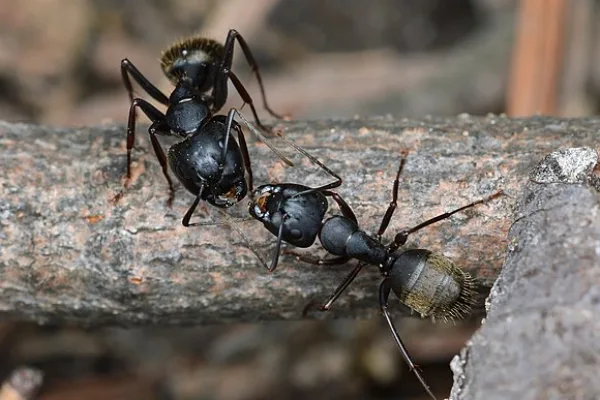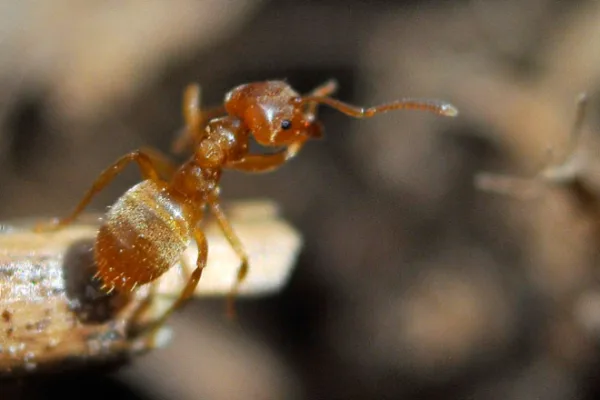The animal world is fascinating and amazes us in many ways. There are many animals present in this world with different features and remarkable characteristics; we just have to look at them.
Ants may sound like common insects, but they occur in many incredible forms. In this article, we will discuss some ants with yellow stripes. If you are an insect enthusiast, then this article is for you!
Ants with Yellow Stripes
1. Black Carpenter ants (Camponotus pennsylvanicus)

The black carpenter ant is a common species of Camponotus pennsylvanicus found in the United States and Canada. They are known as carpenter ants because they dig out galleries in the wood to make nests.
They have black bodies with two yellow stripes on the abdomen, and yellow hairs are also present. It is the largest ant species in North America, and a queen can attain a length of up to 19 to 21 mm. They also show a kind of mutualism with aphids.
Aphids produce honeydew, which they use to larvae, and carpenter ants shelter them. They can forage over large distances of up to 91 m as they communicate through pheromones.
2. Yellow meadow ant (Lasius flavus)

It is the most common ant species found across the world. They are 2-4.5 mm long and have brownish-yellow bodies; females are darker in shade than others in color and have two yellow stripes on the abdomen.
Pleometrosis is very common among them, which means multiple queens can also be present in the nest. They are shy and like to stay underground to avoid predators. They have an average life span of 18 years.
3. Larger Yellow Ants (Lasius interjectus)
According to the IUCN, they are considered one of the 100 most invasive species in the world. Because of this property, they are called “thief ants,” as they act as parasites in other ants’ nests and have invasive effects on agricultural fields, ecosystems, and human health.
These fire ants inhabit agricultural fields, pastures, parks, roadsides, etc. They have a brown head and dark abdomen, and their lower abdomen has two pale stripes. The government has started initiatives to solve this problem of fire ants.
These ants can grow up to 2-6 mm and are aggressive and venomous. Their venom contains certain toxins that can cause burning sensations and even anaphylactic reactions.
4. Winter ants (Prenolepis imparis)
Prenolepis imparis is a species of ant commonly found in North America, Canada, and Mexico. The winter ant, the false honey ant, and the false honeypot are some of their common names. They are the only ant species in the Insecta class that are active during the winter and inactive during the summer.
They vary in color from brown to black and have three yellow stripes on their bodies. The head has hair all over, and the exoskeleton is smooth and shiny. They secrete a white liquid as a defense mechanism that repels their predators, but they are harmless to humans.
Conclusion
In conclusion, these small creatures are fascinating and play a very important role in ecosystems. Some are highly venomous and aggressive, whereas others are shy. They show a lot of phenomena like pleometrosis, mutualism, etc.
They are very common in forests and can cause a lot of problems for humans. These are some ants with yellow stripes. There is more to be revealed.
Also Read:

Being a zoology student I’m always been fascinated toward animals especially insects. I love to do research and learn about different animals. As a writer I want to share my thoughts about nature through my articles. Apart from this you can find me exploring the new places and voice notes.
